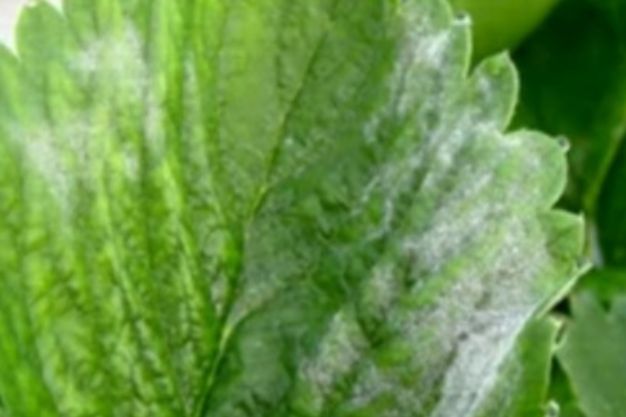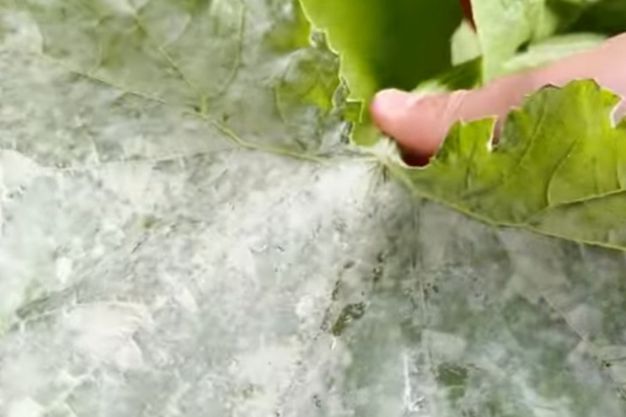
The first sign of powdery mildew white spots on indoor plants is frustrating for a plant enthusiast. It manifests as white, powdery patches on leaves that look like freckles of snowflakes. So, what is powdery Mildew?
Powdery mildew is a fungal disease that thrives in damp, humid conditions. It creates a white coating on leaves, stems, and sometimes fruits of different plants. The fungus thrives in humid conditions and laces with limited air circulation.
If left unchecked, it can hinder photosynthesis, weaken the plants, and hinder their growth. It is most common for indoor gardens because of the humid conditions and poor air circulation, unlike plants in an outdoor garden that are exposed to direct sunlight.
Before you throw away your plants and give up on your dreams of having a thriving indoor garden in New York, understand that it is possible to stop the fungal menace. In this article, we will explore the preventative measures you can take to keep the powdery mildew at bay and ensure that your plants remain healthy and produce a bountiful harvest.

Powdery Mildew Effect on Humans
Is powdery mildew harmful to humans? You can touch a fruit or vegetable with powdery mildew without any side effects unless you are allergic to mold, which can cause a serious reaction.
Although there is no direct threat in most cases, eating some plants affected by powdery mildew can pose serious health risks and lead to respiratory infections, particularly for people with compromised immunity. Furthermore, it is harmful to potential food sources because it spreads so fast and causes plants to die.
What To Do When Powdery Mildew Keeps Coming Back
It is frustrating when powdery mildew keeps coming back. The fungus is quite resistant and is one of the most common challenges for plant enthusiasts and gardeners. It is a menace when you live in high-rise apartments in New York that don’t have access to bright sunlight. The strategies will help you break the cycle and fight powdery mildew that keeps coming back.
1. Improve air circulation
Your indoor garden needs a steady airflow and proper ventilation to keep off the fungus, which thrives in trapped air. Ensure the indoor plants have enough space between them to allow air to circulate freely. You can use a fan once in a while to improve circulation in your indoor garden.
2. Water your plants sparingly
Powdery mildew thrives in damp areas, and over-watering your plants provides the perfect environment that makes them easy to grow. Water your plants from the stems and avoid sprinkling water on the leaves. Water your plants in the morning to give them time to dry up before nighttime.
3. Expose your plants to sunlight
Indoor plants need a daily dose of natural light to stay healthy. Position the containers and pots where the plants can get adequate sunlight.
4. Use neem oil
A natural way to keep the fungus from your plants is to use neem oil, a natural fungicide. Mix neem oil with water and spray on the affected areas of the plants regularly as a preventative measure.
5. Use baking soda
Baking soda is not just useful when making your favorite pastry but also comes in handy in this case. Mix one teaspoon of baking soda with a quart of water and a few drops of soap dish, then shake well. Spray the mixture on the affected areas of your plants.
6. Remove infected plants
The fungus spreads like bushfire, given a chance. Once you spot it, remove and dispose of the affected leaves or branches to prevent the fungus from spreading to other parts of the plant. Cut carefully to avoid spreading the spores to other plants.

7. Choose resistant plants
Most affected plants include strawberries, blueberries, zucchini, eggplant, cantaloupe, and pumpkins. For most New Yorkers, moving apartments may not be an option.
This option also works if you cannot change the location of your indoor garden. Rather than give up on your garden, choose varieties known to be resistant to mildew.
Final Words
It is stressful to see powdery mildew take over the garden you’ve worked so hard to maintain. But all is not lost. Prevention is the best defence. Keep your garden well aerated and in direct sunlight. Inspect the plants regularly and take immediate action when you spot any signs of the fungal foe.
You can also opt to choose mildew-resistant plant varieties for your indoor garden. If you have tried all these strategies and the fungus does not seem to yield despite your best efforts, consult a local garden expert or a horticulturist to get specific recommendations for the plant species.
FAQs
Powdery mildew is mainly caused by a fungus called Podosphaera xanthii and mainly affects plants such as cucumbers, eggplants, gourds, zucchini, blueberries, pumpkins, and watermelon.
The most effective treatment for powdery mildew is baking soda. Mix one teaspoon with one quart of water. Then, spray on the plants to kill the fungus.
The best natural spray for powdery mildew in flowers is the baking soda and liquid soda mixture. Spray on the plants once or twice every week.
You should spray the natural solution during the times of the year when the fungus is likely to occur. Start spraying when the plants start to show signs of mildew.
Baking soda is one of the best home remedies for treating powdery mildew.







Comments (5)
How to Grow Leek Microgreens Fast and Easy at Home - City Green Thumbsays:
November 11, 2023 at 2:06 pm[…] Powdery Mildew Keeps Coming Back? Try These 7 Genius Home Remedies […]
Can Aloe Vera Plant Grow Indoors? - City Green Thumbsays:
November 20, 2023 at 4:10 pm[…] can also clean the leaves with a natural leaf cleaner to remove dust, mildew, and […]
Pothos Plant Care Tips for Beginners: 10 Things You Should Know - City Green Thumbsays:
November 23, 2023 at 4:03 pm[…] Powdery Mildew Keeps Coming Back? Try These 7 Genius Home Remedies […]
Can You Grow Strawberries Hydroponically? - City Green Thumbsays:
April 23, 2024 at 4:21 pm[…] If you notice any mildew on the leaves remove the affected plant immediately to prevent spreading. This article shares a comprehensive guide to preventing powdery mildew. […]
What Are the Best Companion Plants for Tomatoes? - City Green Thumbsays:
April 25, 2024 at 5:05 pm[…] Powdery Mildew Keeps Coming Back? Try These 7 Genius Home Remedies […]